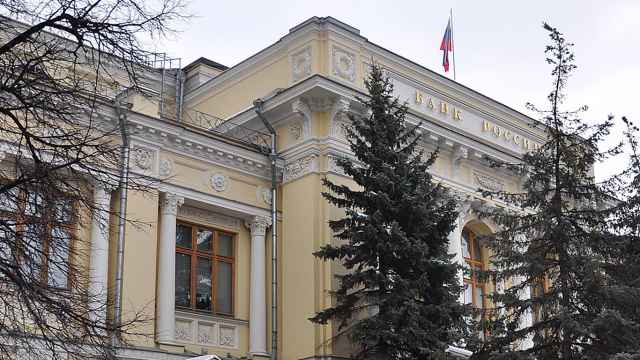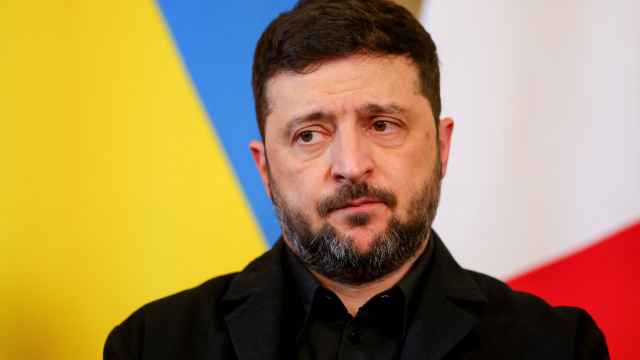SINGAPORE — Mirae Asset Global Investments, South Korea's largest mutual fund manager, is buying ruble bonds on speculation that the strongest currency rally among the Group of 20 richest nations has further to run as oil climbs.
"Russia will be among the top performing bonds as its currency appreciates and oil prices stay high," Heo Joon-hyuk, head of global fixed-income investments at Mirae Asset in Seoul, which oversees $40 billion, said in a phone interview. "In emerging markets, the outlook for commodity prices is good. We like oil-producing countries with high leverage on crude prices."
Mirae joins Pacific Investment Management, Goldman Sachs Asset Management and hedge fund GLG Partners in betting the out-performance will continue as U.S.-led airstrikes on Libya stoke crude's 14 percent rally this year, boosting the economic recovery in Russia, the world's biggest oil exporter. The ruble is up 7.8 percent against the dollar in 2011, heading for its best quarter since 2009, while India's rupee is little changed and Brazil's real and the South African rand are down.
Russian local-currency bonds have climbed 2.5 percent this year, beating the 0.8 percent gain for China's yuan debt, 1.6 percent increase for Indian notes and 1.5 percent advance for Brazil, according to JPMorgan Chase indexes. January 2013 ruble securities are yielding 5.76 percent, 709 basis points, or 7.09 percentage points, less than similar-maturity Brazilian government real bonds.
Russian assets are "cheap" and the top pick among developing economies, Goldman Sachs Asset Management chairman Jim O'Neill said March 17 at the Bloomberg Link Hedge Fund Conference in London. Ruble appreciation is "one of the biggest trades" at GLG, Bart Turtelboom, co-head of emerging markets, said at the same conference.
Mirae Asset's flagship bond fund, the Global Securities Master Investment Trust (Bond), averaged 15 percent annual returns over the past three years, beating 91 percent of its peers, according to data compiled by Bloomberg. The fund is targeting a return of as much as 8 percent this year, after handing investors an 11 percent gain in 2010 and 1.5 percent so far this year, Heo said.
The fund, with $320 million of assets as of Tuesday, is allocating the biggest chunk of its non-Asia investment to Eastern Europe at 18 percent, Heo said. The fund also has 18 percent in Asian markets outside of South Korea, 15 percent in developed markets and 8 percent in the Middle East.
Russia is Mirae's biggest foray in Eastern Europe, accounting for 7.1 percent of the fund's assets, Heo said. It's the fund's fourth-biggest allocation by country after 13.5 percent in South Korea, 8 percent in China and 7.3 percent in the United States, he said.
Mirae, which also owns local-currency debt issued by China, Brazil and India, favors the so-called BRIC economies among developing nations as budget improvements since the 1997 Asian financial crisis and the 2008 global credit crisis "help shield their currencies from external risks," including Europe's debt crisis and political instability in the Middle East, Heo said.
"Countries with cash flows from current-account surpluses don't run high risks of weakness in their currencies," he said. "However, we would prefer short-term debt than longer ones since borrowing costs are generally trending higher."
Pimco, the Newport Beach, California-based manager of the biggest bond fund, recommended company notes in Russia, Brazil and other emerging markets where public and private debt is relatively low and rising wages give borrowers the confidence to pass on cost increases stemming from inflation, Mark Kiesel, head of corporate bond portfolio management, wrote in a report on March 21.
Mirae has cut its holdings of dollar- and euro-denominated bonds on concern the U.S. will consider ending its $600 billion second round of quantitative easing and policy makers will start raising interest rates in Europe, Heo said. The company also raised the proportion of its assets held in cash to above 10 percent, from a maximum 8 percent in 2010, he said.
"We are not at a comfortable situation that we can aggressively invest," Heo said. "We need to build a position that can benefit from a likely flattening of the curve in advanced countries. Europe is bracing for rate hikes which could pressure the United States to end its monetary easing."
A Message from The Moscow Times:
Dear readers,
We are facing unprecedented challenges. Russia's Prosecutor General's Office has designated The Moscow Times as an "undesirable" organization, criminalizing our work and putting our staff at risk of prosecution. This follows our earlier unjust labeling as a "foreign agent."
These actions are direct attempts to silence independent journalism in Russia. The authorities claim our work "discredits the decisions of the Russian leadership." We see things differently: we strive to provide accurate, unbiased reporting on Russia.
We, the journalists of The Moscow Times, refuse to be silenced. But to continue our work, we need your help.
Your support, no matter how small, makes a world of difference. If you can, please support us monthly starting from just $2. It's quick to set up, and every contribution makes a significant impact.
By supporting The Moscow Times, you're defending open, independent journalism in the face of repression. Thank you for standing with us.
Remind me later.





